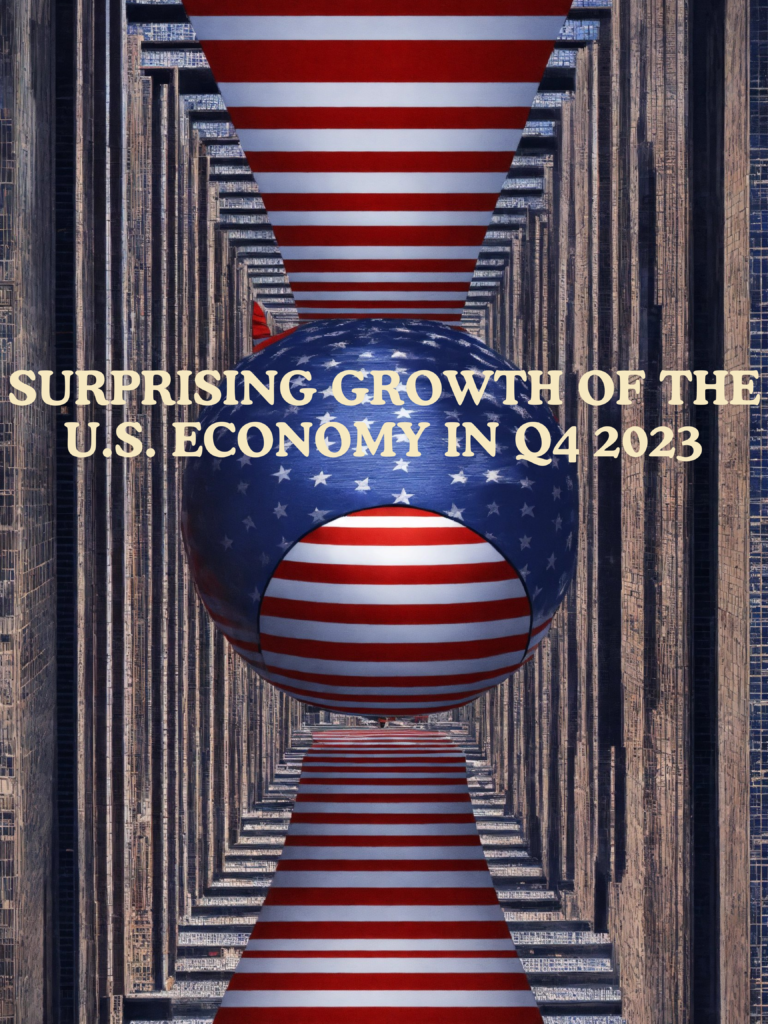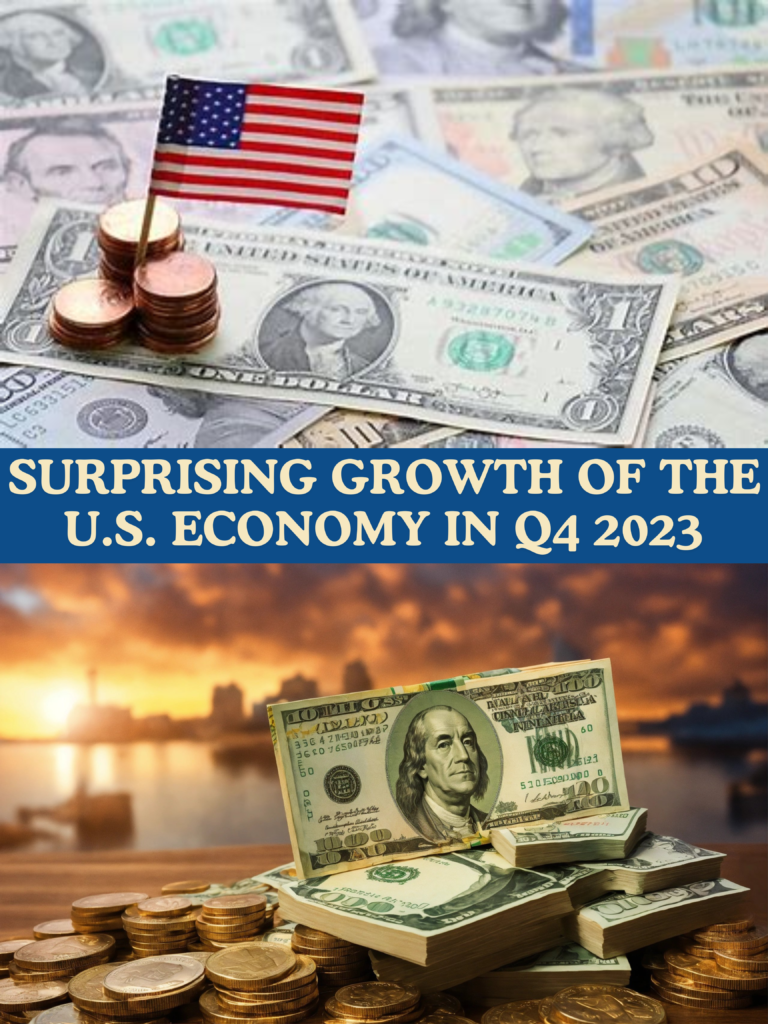In a surprising turn of events, the U.S. economy in Q4 defied expectations and demonstrated remarkable resilience, expanding at a rate of 3.3% in the fourth quarter of 2023. This unexpected growth, higher than the forecasted 2%, can be attributed to a combination of factors that propelled various sectors of the economy. Here are 12 key reasons behind this robust performance.

12 Reasons Behind the Surprising Growth of the U.S. Economy in Q4
- Consumer Spending Resilience:
- Diverse Economic Engines: U.S. Economy in Q4
- Government Spending Boost:
- Private Inventory Investments: U.S. Economy in Q4
- Non-Residential Fixed Income Jump:
- Moderate Drop in Consumer Spending:
- Housing Market Challenges: U.S. Economy in Q4
- Government Deficit Spending:
- Inflation Progress: U.S. Economy in Q4
- Labor Market Resilience:
- Market Reactions: U.S. Economy in Q4
- Challenges on the Horizon:
- Disclaimer
Consumer Spending Resilience:
Consumer spending, constituting two-thirds of the GDP, continue to be a driving force, rising by 2.8% in the fourth quarter. Despite concerns about inflation and interest rates, consumers displayed resilience, contributing significantly to economic growth.
Diverse Economic Engines: U.S. Economy in Q4
The fourth quarter saw all cylinders of the GDP firing, according to Robert Frick, corporate economist with Navy Federal Credit Union. This diversity in economic engines helped sustain growth even as some experts predicted a recession.
Government Spending Boost:
Both federal and state/local government spending played a vital role in fueling the economic expansion. State and local government spending increased by 3.7%, contributing to the overall positive momentum.
Private Inventory Investments: U.S. Economy in Q4
Increases in private inventory investments also made a notable impact, contributing to the unexpected growth. This suggests that businesses were optimistic about future demand, leading to increased production and investment.

Non-Residential Fixed Income Jump:
Non-residential fixed income experienced a significant jump, further supporting the GDP numbers. This demonstrates a positive trend in business investment and confidence.
Moderate Drop in Consumer Spending:
Although there was a slight drop of 0.1% in consumer spending from the previous quarter, the overall resilience and strength of the consumer base continued to drive economic expansion.
Housing Market Challenges: U.S. Economy in Q4
Despite the overall positive performance, the real estate market faced challenges as high mortgage rates led to a 27% plunge in housing investment for the second consecutive quarter.
Government Deficit Spending:
Government deficit spending, with a total federal IOU at $34 trillion, emerged as a significant contributor to growth. However, concerns linger about the sustainability of this strategy in the long run.
Inflation Progress: U.S. Economy in Q4
The report also highlighted progress in inflation control. Core prices for personal consumption expenditures rose 2%, indicating a positive trend towards controlling inflation without hindering economic growth.
Labor Market Resilience:
The solid labor market conditions and wage growth played a crucial role in supporting consumer spending. Despite predictions of a slowdown, job growth remained moderate.
Market Reactions: U.S. Economy in Q4
The markets showed a modest reaction to the report, with stock futures gaining slightly and Treasury yields moving lower. This suggests cautious optimism as investors assess the economic landscape.
Challenges on the Horizon:
While the report paints a positive picture, concerns about the lagged effects of monetary policy, consumer spending sustainability, and geopolitical uncertainties loom on the horizon. The nature of the boom, driven partly by government deficit spending, adds an element of caution.
In conclusion, the unexpected surge in the U.S. economy during the fourth quarter of 2023 can be attributed to a combination of resilient consumer spending, diverse economic engines, and government stimulus. However, challenges remain, and the sustainability of this growth will depend on how well the economy navigates through potential headwinds in the coming months.
Disclaimer
This article has been created on the basis of internal data, information available publicly, and other reliable sources to be believed. The article may also include information which are the personal views/opinions of the authors. The information included in this article is for general, educational, and awareness purposes only and is not a full disclosure of every material fact.
All the information on this website i.e. World Virtual CFO – is published in good faith and for general information purposes only. World Virtual CFO does not make any warranties about the completeness, reliability, and accuracy of this information. These are my views for only information purposes. Any action you take upon the information you find on this website (World Virtual CFO), is strictly at your own risk. World Virtual CFO will not be liable for any losses and/or damages in connection with using our website. For details please refer to our disclaimer page.
Dr. Dinesh Sharma is an award-winning CFO and AI strategist with over two decades of experience in financial leadership, digital transformation, and business optimization. As the founder of multiple niche platforms—including WorldVirtualCFO.com—he empowers professionals and organizations with strategic insights, system structuring, and innovative tools for sustainable growth. His blogs and e-books blend precision with vision, making complex financial and technological concepts accessible and actionable.